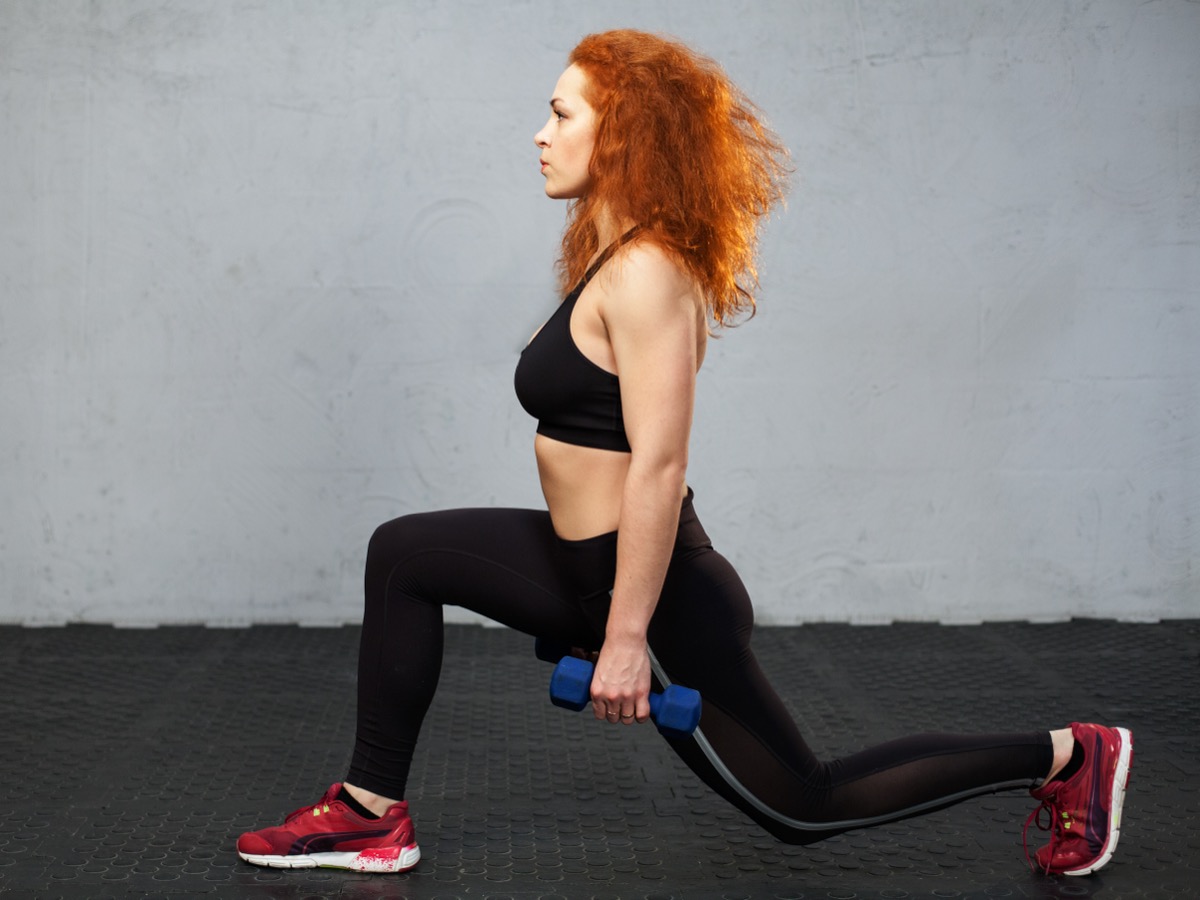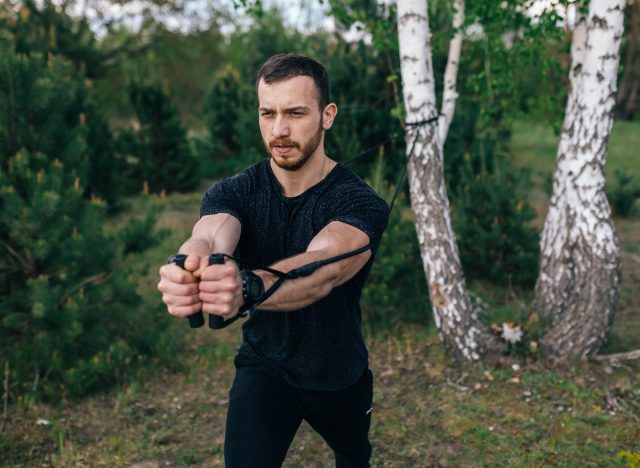The 4 Best Exercises To Reverse Muscle Loss After 50

As a certified personal trainer and group exercise instructor for nearly 40 years, I’ve helped countless individuals transform their health and achieve their fitness goals. I’ve seen firsthand how our bodies change as we age, often making it harder to stay active and maintain strength.
But I’ve also witnessed remarkable transformations in people over 50 who commit to the right exercise approach. Whether you’re dealing with stiffness, decreased energy, or just want to feel more vital, these proven exercises can help you regain the body you had a decade ago. Read on to discover how to incorporate these simple yet powerful movements into your routine for lasting results.
How Your Body Changes After 50
Your body changes naturally with age, which can thwart fitness goals. After 50, you lose 3-5% muscle mass every decade without resistance training. This accelerates metabolic slowdown and makes weight management harder, even if you’re eating the same as you did in your younger years.
Joint stiffness becomes a daily reality as cartilage thins and synovial fluid production decreases. Many of my clients notice this first in their knees, hips and shoulders – the areas that are critical for basic mobility.
Recovery also takes longer. The workout that used to leave you feeling refreshed now takes 48-72 hours before your muscles feel ready again.
Bone density decreases, especially in women after menopause, increasing fracture risk with even moderate activity. Balance deteriorates as proprioception (your body’s position awareness) becomes less acute, making falls more common and potentially more serious.
Cardiovascular capacity also diminishes. Your heart’s maximum output decreases about 1% every year after 40. Meaning what was once a manageable activity leaves you breathless.
Add to that increased blood pressure that’s common in this age group, and you may need to modify exercise intensity.
The good news? These changes respond remarkably well to the right exercise approach. Consistency matters more than intensity after 50 and strategic movement can offset these aging effects big time.
Why These Movements Are So Effective
These four exercises target the very systems that decline with age. Rather than isolating muscles (like most gym routines do), they activate full movement patterns that mimic real life. This integrated approach maintains functional strength – the kind that keeps you independent and capable for daily tasks.
They combat sarcopenia (age-related muscle loss) by engaging multiple large muscle groups at once, triggering greater hormonal responses than isolated exercises. This hormonal stimulation maintains lean tissue throughout your body, not just in the worked muscles.
They maintain joint health by controlling loading across full ranges of motion. The gentle compression pumps synovial fluid through the cartilage, delivering nutrients and removing waste products, essentially “feeding” your joints while strengthening the surrounding supportive tissues.
Each exercise challenges your neuromuscular system, reinforcing the brain-muscle connections that deteriorate without use. This is really important for balance, coordination, and reaction time – all important for preventing falls and staying independent.
Most importantly these exercises can be adapted to any fitness level and mobility limitations and offer progressive challenges without excessive risk. They are compound exercises that deliver maximum physiological benefit for minimal time investment – essential for creating sustainable habits.
Hip Hinge (Bodyweight or Kettlebell)

How to do it correctly: Stand with feet shoulder-width apart. Keeping your back flat and core tight, push your hips backward as if shutting a car door with your bum. Allow slight knee bend while maintaining weight in your heels. Lower until your torso is nearly parallel with the floor (or as far as comfortable), then drive hips forward to return to standing.
How often: 2-3 times weekly, 2-3 sets of 8-12 repetitions.
Why it’s effective: This exercise re trains proper posterior chain activation to counteract the forward hunched posture that comes with age. It strengthens glutes, hamstrings and lower back – the muscles that help you maintain good posture and prevent back pain. This movement pattern translates to everyday activities like picking things up safely.
Gentler modifications: Do the movement with your hands on a countertop or chair for support. Focus on the hip movement and reduce the range of motion until you build strength. A dowel rod along your spine helps you maintain proper alignment.
Common mistakes: Rounding your lower back (instead of keeping natural curve), bending your knees too much (turning it into a squat instead of a hinge), and not pushing your hips back enough (it should feel like your behind is moving back).
Modified Push-up (Wall, Counter, or Floor)

How to do it: Start at an angle that suits your strength – against a wall (easiest), kitchen counter, bench or floor (most difficult). Hands slightly wider than shoulders. Lower your body with elbows at around 45 degrees to torso, keeping a straight line from head to heels. Press back up to starting position.
How often: 2-3 times a week, 2-3 sets of 8-12.
Why it’s effective: Upper body pushing strength falls off dramatically with age but is still essential for independence. This exercise maintains chest, shoulder and tricep strength while engaging core stabilizers. The modified versions allow for any strength level while building confidence.
Gentler modifications: Increase the angle by using a higher surface (wall or counter) to reduce the percentage of bodyweight you’re moving. Focus on quality over quantity, even if you only do 3-5 reps.
Common mistakes: Sagging hips (engage core), flared elbows (creates shoulder strain), and incomplete range of motion (lower until chest is almost touching the surface, not just halfway down).
Split Stance/Lunge Variations

How to do it: Start in a staggered stance, one foot in front of the other. Bend both knees and lower your body. The front knee should track over (not past) the toes. The front thigh should almost touch the ground and the back knee should lower towards the ground. Push through the front heel to return to start.
How often: 2-3 times a week, 2-3 sets of 8-10 reps per leg.
Why it’s effective: This exercise trains single leg strength and balance at the same time – both important for preventing falls. It strengthens quads, hamstrings and glutes while challenging core stability and hip mobility. It mimics walking and stair climbing and translates directly to daily function.
Gentler modifications: Hold onto a chair or countertop for balance. Reduce depth as strength builds. Start with a smaller split stance and progress to a longer stride as you get comfortable.
Common mistakes: Allowing the front knee to collapse inwards (keep it lined up with middle toe), leaning the torso too far forward (stay upright), and not distributing weight properly (60-70% on front foot).
Pulling Movement (Row Variation)

How to do it: Use a resistance band attached to a door handle or sturdy object, stand with feet hip width apart. Hold the bands with arms extended. Pull the elbows back towards your body, squeezing your shoulder blades together. Slowly return to the starting position.
How often: 2-3 times a week, 2-3 sets of 10-15 reps.
Why it’s effective: Pulling strength counteracts the forward rounded posture that comes with age and screen time. This exercise strengthens the entire posterior chain – upper back, rear shoulders and arms – the muscles that keep you in proper posture. Strong back muscles reduce neck pain and headaches and improve breathing.
Gentler modifications: Seated band rows reduce stability demands. Using lighter resistance and focusing on the shoulder blade movement will give you benefit even with no weight.
Common mistakes: Using momentum instead of control, shrugging the shoulders towards your ears (keep them down), and not going to full range of motion (fully retract the shoulder blades at the end position).
Your Weekly Workout Plan
Start with two full-body sessions weekly, spaced at least 48 hours apart. Each session should include all four movement patterns, performing 2 sets of 8-12 repetitions of each exercise. Complete one movement pattern before moving to the next, resting 60-90 seconds between sets.
Begin each workout with 5-7 minutes of gradual warm-up:
- Gentle walking
- Arm circles
- Hip rotations
This increases circulation to muscles and joints. After your main exercises, include 5 minutes of simple stretches, holding each position for 20-30 seconds.
Progressing Your Workouts
As your body adapts (usually within 3-4 weeks) add a third weekly session if recovery allows. Look for signs of overtraining:
- Unusual soreness lasting more than 48 hours
- Decreased energy
- Joint discomfort
If you see these signs you need more rest between sessions.
After 6-8 weeks of consistent training you can start to add a 3rd set to each exercise or add light resistance to bodyweight movements. Progress should feel gradual and manageable, never forced.
Daily Movement Matters
Pair these strength sessions with daily walking for 20-30 minutes at a pace you can talk at. This low intensity activity promotes circulation, joint health and stress reduction without using up recovery resources.
Results You Can Expect in 3 Months
After 12 weeks of consistent training most clients see 20-30% strength gain in trained movements. Daily activities like climbing stairs, carrying shopping bags and standing up from chairs become much easier. This functional gain often surprises people more than the changes in the mirror.
Joint Improvements
Joint mobility typically improves 15-25% especially in hips and shoulders. Morning stiffness decreases in duration and intensity.
Many clients report being able to look over their shoulder while driving or reach overhead without discomfort for the first time in years.
Body Composition Changes
Changes in body composition become visible around 8-12 weeks with modest fat loss (3-8 pounds) and slight muscle definition increase especially in arms and legs. Clothes fit differently even when the scale hasn’t changed.
Energy and Sleep
The amount of energy people gain often exceeds expectations. By week 12, most clients report a 40-50% increase in their daily energy – especially in the afternoons when they used to experience a slump.
Sleep quality improves within 4-6 weeks (which also plays a big part in the daily energy) with deeper sleep cycles and fewer times waking in the night.
Balance and Confidence
Balance and coordination will generally show measurable improvements with it common to see 15-30% better performance on simple tasks like standing on one foot.
This translates to more confidence in their general movement and less fear of falling – massive psychological benefits that go much further than physical changes.
Starting Tips for Beginners
Start where you are, not where you think you should be. The biggest mistake is trying to do too much too soon and ending up sore or injured. Your body responds to appropriate challenges, not maximum effort.
Modify As Needed
Modify exercises to fit where you are today. Using wall push-ups instead of floor push-ups isn’t cheating – it’s smart training that builds capacity while respecting your limits. Progress happens through consistency, not intensity.
Working Around Limitations
Conditions you already have require acknowledgement but rarely keep you from exercising. Arthritis, replaced joints, old injuries – all can be worked around with proper modifications.
Ask your healthcare provider about specific limitations, but don’t accept blanket “don’t exercise” advice.
Expect Fluctuations
Expect good and bad days. Some sessions will feel stronger than others. This natural variation doesn’t mean you’re failing or regressing – it’s normal physiology.
Track progress over weeks and months, not individual workouts.
Stay Accountable
Find accountability through a training partner, scheduling sessions in your calendar or working with a trainer experienced with older adults. External accountability helps you stay consistent especially in the critical first 6 weeks.
Consistency Over Perfection
Remember perfect consistent exercise doesn’t exist. Missing a session or two means nothing in the long run. What matters is getting back to your routine rather than giving up after interruptions.
The program that works is the one you’ll actually do for years, not weeks.
Michael Betts is the Director of TRAINFITNESS, the UK’s leading fitness education company. With nearly 40 years in the industry, he is a certified personal trainer and group exercise instructor specializing in fat loss, personal training, and fitness education.